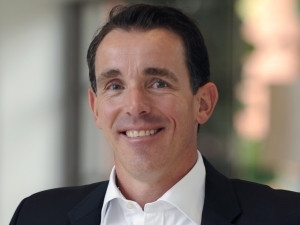
The network is a critical component of the Internet of things. As the Internet of Things (IOT) becomes increasingly smarter, so too does the network have to become more intelligent to keep pace with the demands placed on it. Combined, these two phenomena are changing pretty much everything in the world around us, from the way that companies do business to how we live our lives.
Anton Jooste, principal solutions architect - Internet of Things at Dimension Data, says: "The world is moving into this paradigm of a Fourth Industrial Revolution, characterised by digitisation and Industry 4.0, an era that's radically impacting all organisations of every size across every vertical sector and people from all walks of life. It's inescapable. An unstoppable train, if you will."
A number of components are driving this phenomenon, including advances in mobility, social media, cloud computing, 3D printing, robotics and artificial intelligence. These elements are resulting in several trends such as cyber security, Blockchain and - of course - the Internet of things. Jooste says: "People and businesses will need to leverage some - if not all of these elements to participate in this emerging paradigm. But of all of them, IOT will be disproportionately important and relevant and will, I believe, be foundational to the digitisation era."
A foundational element of digitisation is the proliferation of devices and sensors around the world, says Andre Ferreira, senior vice president - Internet of Things at Dimension Data. "We're seeing the emergence of devices and sensors that are bridging the physical world and the digital world, enabling things that had physical attributes previously to take on a digital persona. All of which is generating huge amounts of data that, of itself, is of little value. However, if we analyse and interpret that data, it's possible to make decisions to support a specific business outcome," says Ferreira. He contends that IOT is more than devices and senses, saying, "In order to be meaningful, IOT has to be combined with Big Data and analytics to deliver a business outcome."
Businesses are leveraging the idea of IOT to solve various problems they may have. So people who are adopting and embracing IOT successfully are those who are clear about the business problem that they're trying to solve, they're not just adopting new technology in the hope that it has some effect.
By its very nature, IOT relies on an ecosystem of technology being brought together, devices and sensors that sense the world, all of which connect via a network that enables them to transfer their data to a data centre, a platform where the data is computed and analysed, and ultimately rendered to users for decision-making. Multiple technological elements need to be brought together along that value chain in what's known as digitisation.
Jooste says: "We have to deliver on the promise of digitisation by bringing these assorted elements together. The network is central to that. Data doesn't miraculously arrive at an analytics platform in a clean digestible format so that business decisions can be made around it. The highly complex underlying process entails connecting devices and sensors securely, delivering appropriate information, organising structured and unstructured data, perhaps in different languages, all of these elements need to be dealt with. Our role as systems integrator is to get that working, and intelligent networking plays a key role in creating an ecosystem of technology that, when brought together properly, can deliver inspiring results."

It's clear that the network is more important than ever as without the ability to connect devices and sensors, IOT just can't happen. "Imagine the implications of connecting billions of devices and sensors to a network, we're talking about billions of devices and sensors," continues Jooste. "We're seeing a number of emerging trends at the network layer that are being driven by the need for capacity, security and the management of devices. Things like software-defined networking, security, edge computing and fog computing (decentralised computing so unnecessary data isn't transmitted over the network), while purpose-built IOT networks are starting to emerge that use new protocols."
Any successful IOT implementation is reliant on having a highly capable network, an appropriate analytics platform and adequate security, which are driving huge evolution at the network layer.
Stephen Green, chief technology officer for MEA at Dimension Data, says: "All of this is happening here and now, it's not a future state. We anticipate seeing a proliferation of connected devices, but the focus isn't on the things, it's on the data that they generate. In the new digital economy, data will make or break businesses. Once businesses know how things are used and where people perceive value, they can monetise that and make business decisions around that information. This is already being done very successfully."
"The potential cost-savings from having this type of insight is huge for companies. For example if you consider an office building, most companies manage lights and HVAC according to usage, but if you have data around occupancy and the flow of people inside a smart building, you can identify dead spots and look at how you can better optimise the use of your available office space. This is a very pertinent discussion that we're having with many companies at the moment."
The intelligent network is enabling IOT capabilities in various industries in various countries. Here are just a few examples of how it's already changing the way people live, work and play:
An IOT project with the Tour de France is helping the cycle tour organisers to digitise the media portion of the race by connecting devices and sensors to bikes that generate GPS and other data from out in the race that is in turn rendered to viewers to give a greater viewing experience. The resulting data is also shared on social media to open up new channels for the company that owns the Tour de France. In addition, historical data is being used to develop predictive models and use machine learning to help better understand what's happening within the race. The challenge of it being a live event with data coming in from a wide variety of geographically distributed sources, makes a hybrid environment non-negotiable - and multiple layers of security is paramount. Read more about this project here.
Closer to home, Connected Conservation is using IOT to clamp down on rhino poaching by getting an early warning of people entering reserves. In the past, the rhino were tagged and abnormal movements were flagged, but often the response team was too slow to prevent the animal from being killed. This implementation sees the installation of various devices and sensors on the perimeter of game reserves that contain rhino in order to generate early warning of intruders. The intention is to track the humans and not the rhino. Camera traps, fence alarms and tracking systems are connected with each other and with humans, making the response time that much faster. Read more about this case study here.
Smart hospitals are already a reality. The ISPPC hospital group in Belgium is using IOT to make hospitals more human and to provide better patient care. Network, security and storage are the backbone of a hyperconnected hospital. Digital signage helps patients and staff find their way around. Interactive content management makes patients feel at home. And mobile device management keeps caregivers, patients and doctors connected. Read the full case study here.
Share